

We may earn revenue from the products available on this page and participate in affiliate programs. Learn More ›
As colder weather closes in, gardens wither and windows stay shut but that doesn’t mean your home is doomed to smell stale and stuffy. You needn’t resort to commercial air fresheners, either, since the right houseplants can scent your indoor space while adding natural beauty.
Whether you fancy floral, fruity, herbal, or grassy aromas, there’s a potted plant that can impart it. What’s more, University of Georgia research shows that many houseplants may reduce indoor pollutant levels and banish airborne contaminants like volatile organic compounds.
Before you head off to the garden center to scout out new houseplants, there’s one caveat: Several of the most delightful aromatic plants are toxic to cats and dogs, capable of causing skin irritation, stomach upset, and even death if consumed in large quantities. We’ll point out the ones that the ASPCA says homes with pets should avoid as we reveal 14 awesome aromatic plants, and offer tips to keep your indoor garden looking and smelling its best.
Enjoy Jasmine
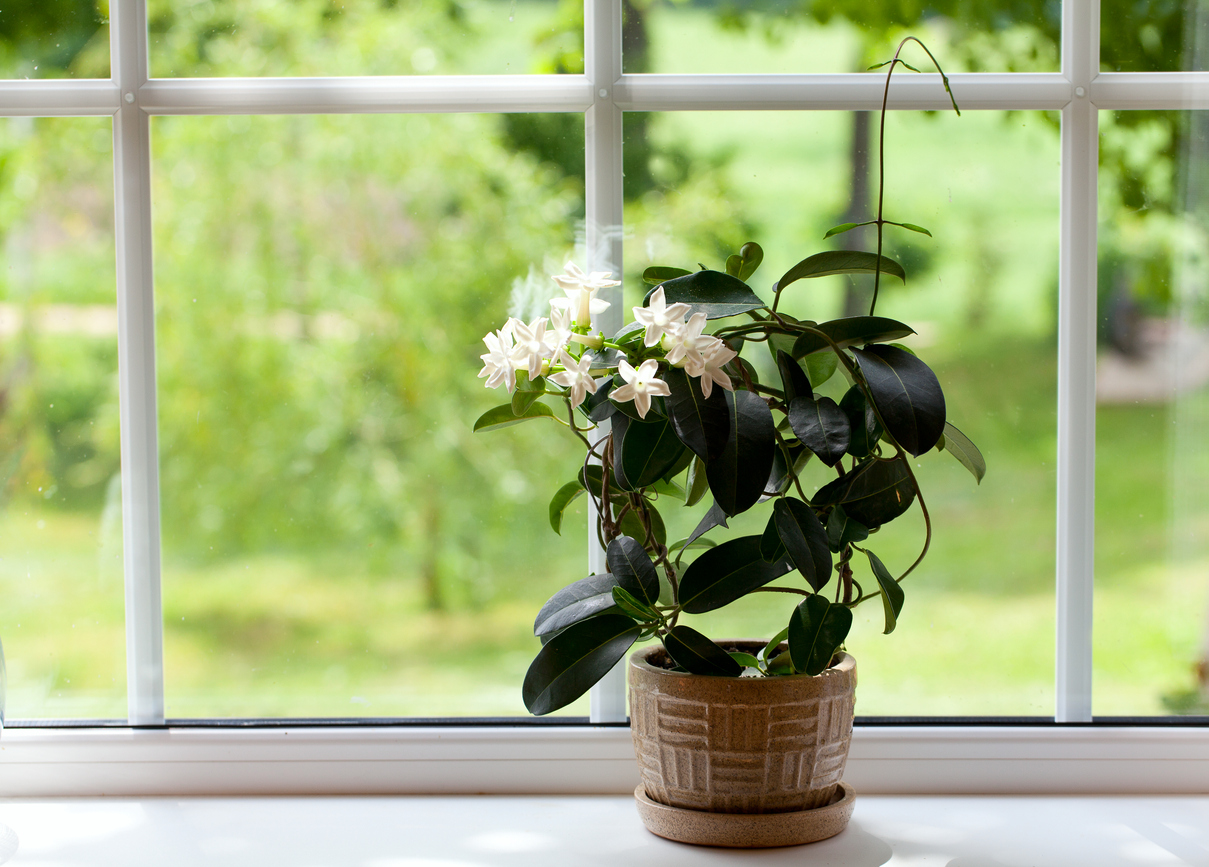
Can’t escape to an island paradise? Bring a tropical vibe home with the sultry scent of jasmine. While not all varieties have a fragrance, white jasmine (Jasminum polyanthum) does, and it will bloom and scent your space all winter. Despite its rich, heady aroma, which is similar to gardenia, it’s not particularly finicky. It likes porous, well-draining soil, a somewhat humid environment, and a decent amount of light (which needn’t be direct sun). Consider putting jasmine in a hanging planter; as a vine, it will grow into beautiful twining trails.
RELATED: The 18 Best Plants for Your Bedroom
Love That Lavender
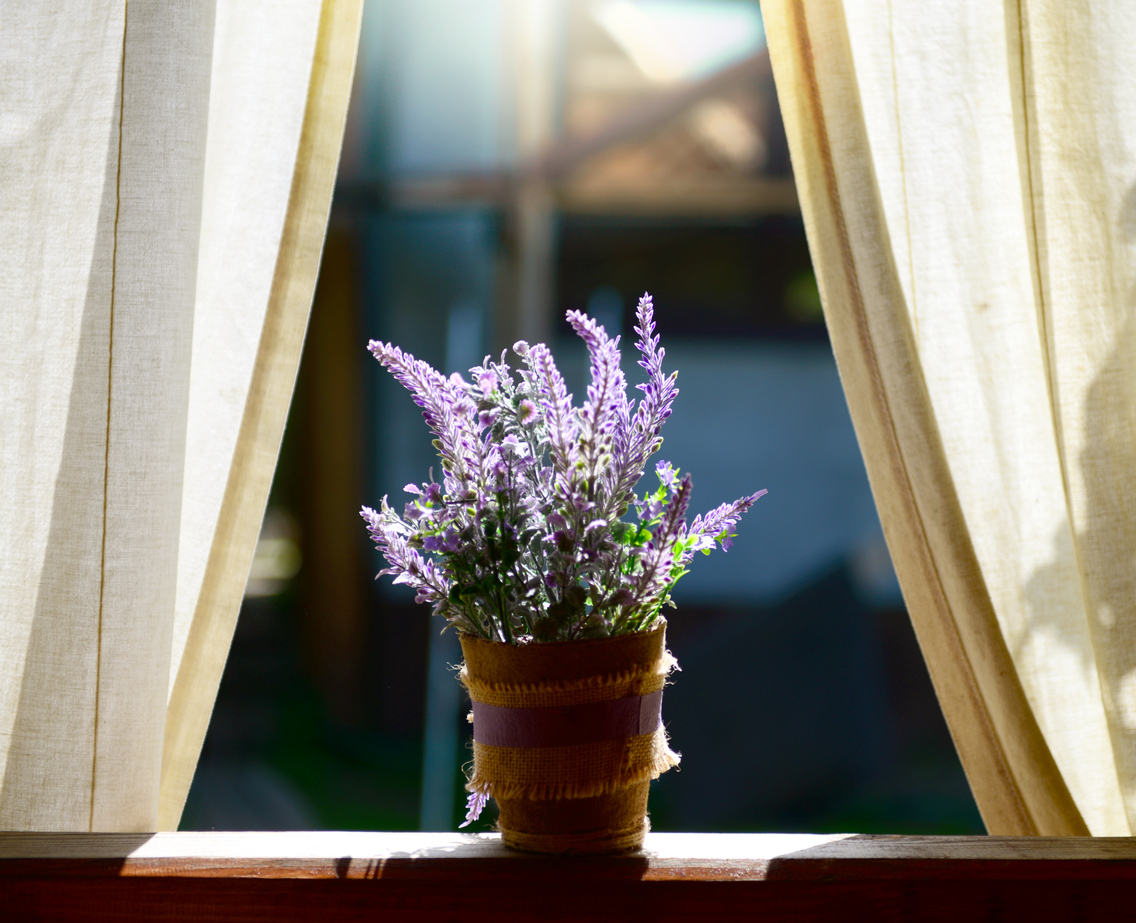
Lay in some lavender (Lavendula), close your eyes, and inhale: You’ll feel like you’re in Provence, France, where the purple flowers blanket fields and fill the air with a unique essence that’s floral, herbal, and woodsy all at once. The scent is well known for its relaxing properties, so it is a great choice for a bedroom or wherever you chill out at home. Treat your lavender plant to loads of light, keep it out of drafts, and allow it to dry a bit between waterings. Alas, lavender is toxic to cats and dogs.
M-m-m-m, Mint!
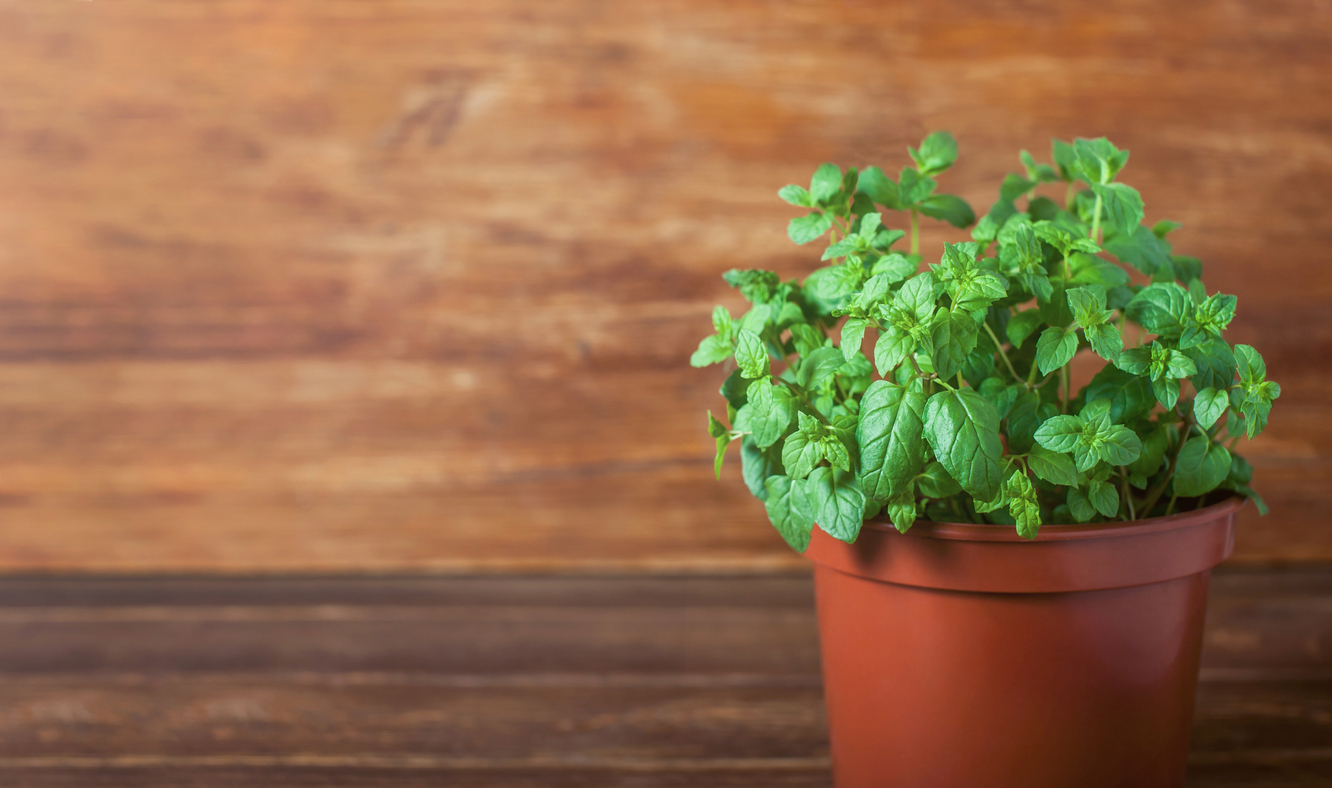
If sweet, flowery perfumes aren’t your speed, move in some mint (Mentha)—a perennial herb first used in ancient times as a room deodorizer. Its bright serrated leaves add a refreshing fragrance and can bring flavorful zing to foods and drinks. Spearmint is among the most popular of a spectrum of types. Give mint well-draining soil and an east-facing window, and keep it moist without overwatering.
Mint must: Pinch off any buds you notice immediately, since they add no scent but may indicate that the plant is getting leggy. The essential oil in mint is toxic to dogs and cats, likely to cause stomach issues if eaten in large amounts.
RELATED: The Best Herbs to Grow Indoors
Bloom on with Begonia
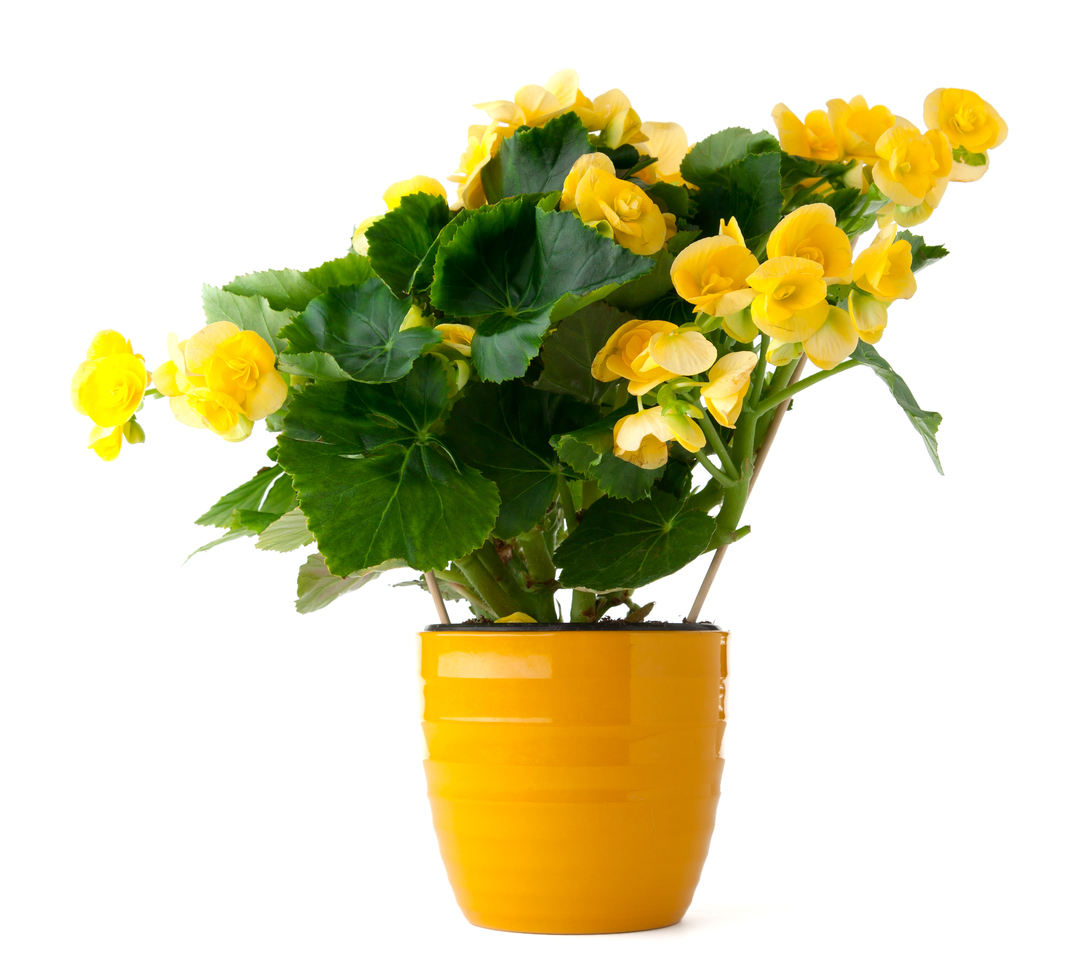
Blooming season? What blooming season? Tea Rose Begonia (Begonia x semperflorens-cultorum) produces pretty pink flowers all year long and enhances any room with a subtle scent. A fairly hardy plant that’s a good choice for a novice indoor gardener, Tea Rose Begonia can do just fine with partial sun but it does appreciate humidity. Plant it by itself or add it to a container garden and admire its good looks and dainty aroma. Warning: Begonias can be a serious problem for pets.
RELATED: All You Need to Know About Begonia Care
Scent with Citrus
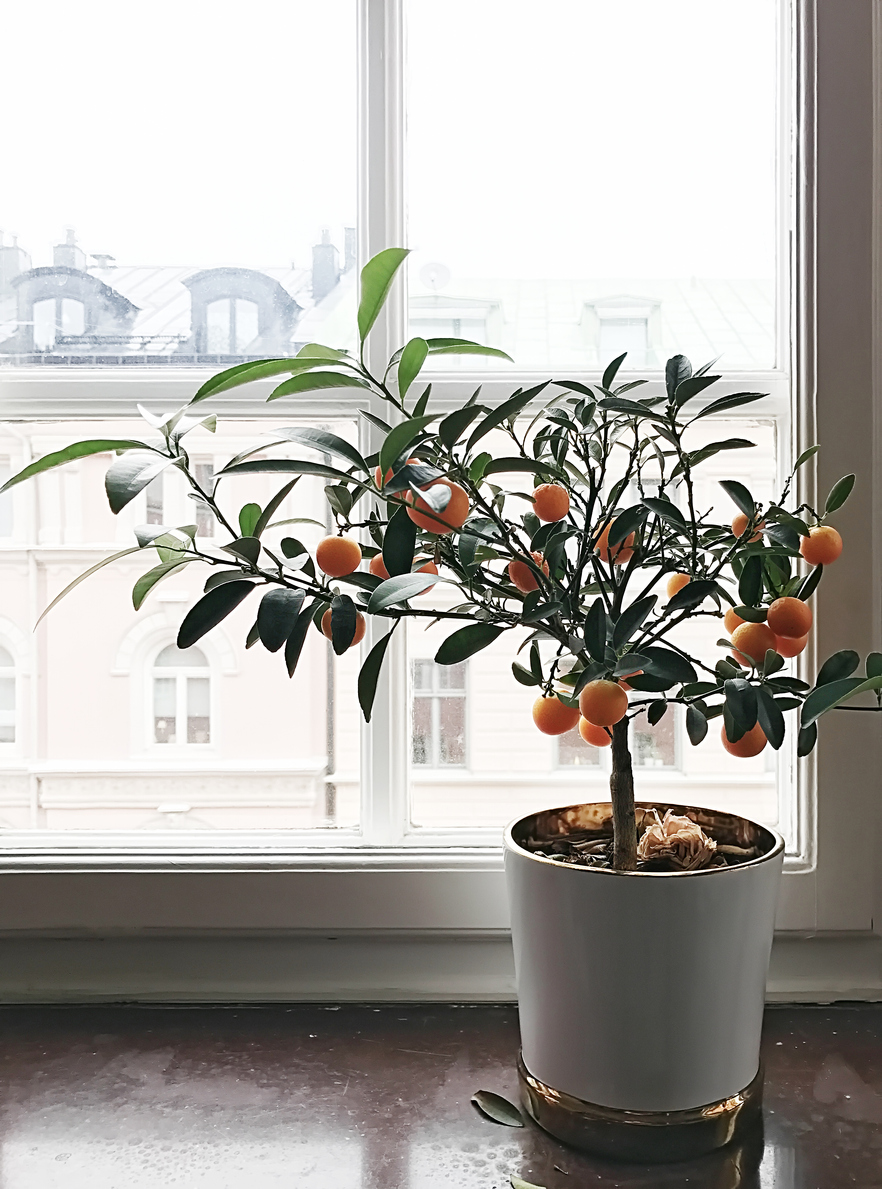
It’s easy to envision vast groves of oranges, limes, and lemons, but citrus trees (members of the Rutacae family) can do quite well on their own indoors. Small white blossoms and their fruit bring an unmistakable sweet-tart scent that’s present yet not overpowering. Citrus needs lots of light and ample watering with well-draining soil.
Choose a south- or southwest-facing window and a lightweight planter made of nonporous material, which will retain a bit of moisture and serve your citrus the extra humidity it loves. While cats and dogs dislike citrus and might simply avoid it, the plants are toxic to pets.
RELATED: 11 Super Simple Ways to Make Your House Smell Fresh
Oh Yes, Orchids!
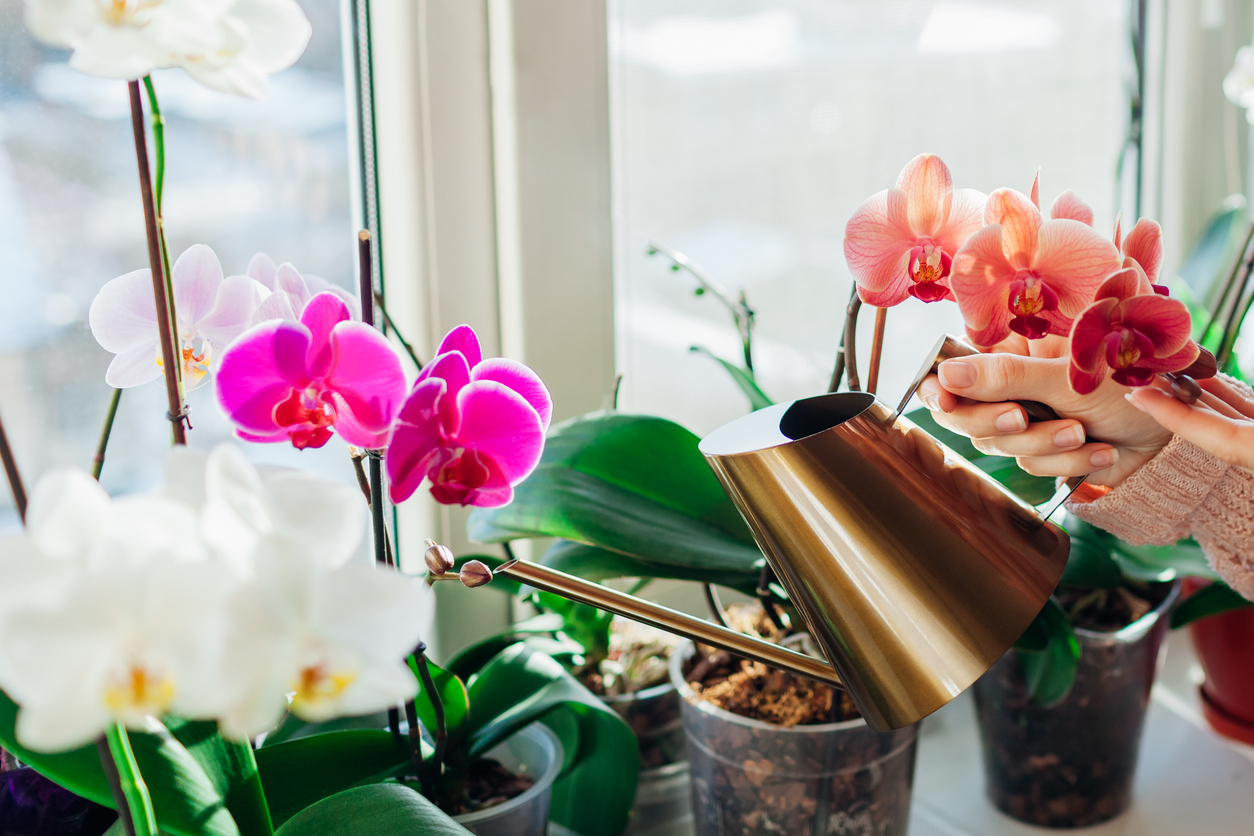
Forget their reputation for fussiness: Exotic, long-blooming orchids can be grown successfully at home, and the right variety will reward your efforts with heady perfume. Brassavola nodosa, for instance, boasts white petals and a particularly strong, sweet scent. Cymbidium, on the other hand, has a lighter, lemony essence that goes with its bright yellow flowers.
Get a soil mix developed for orchids and provide the correct light for the particular variety. While orchids flourish in a humid, warm environment, lower the temperature at night by 10 degrees to boost bloom potential.
Revel in Lily of the Valley
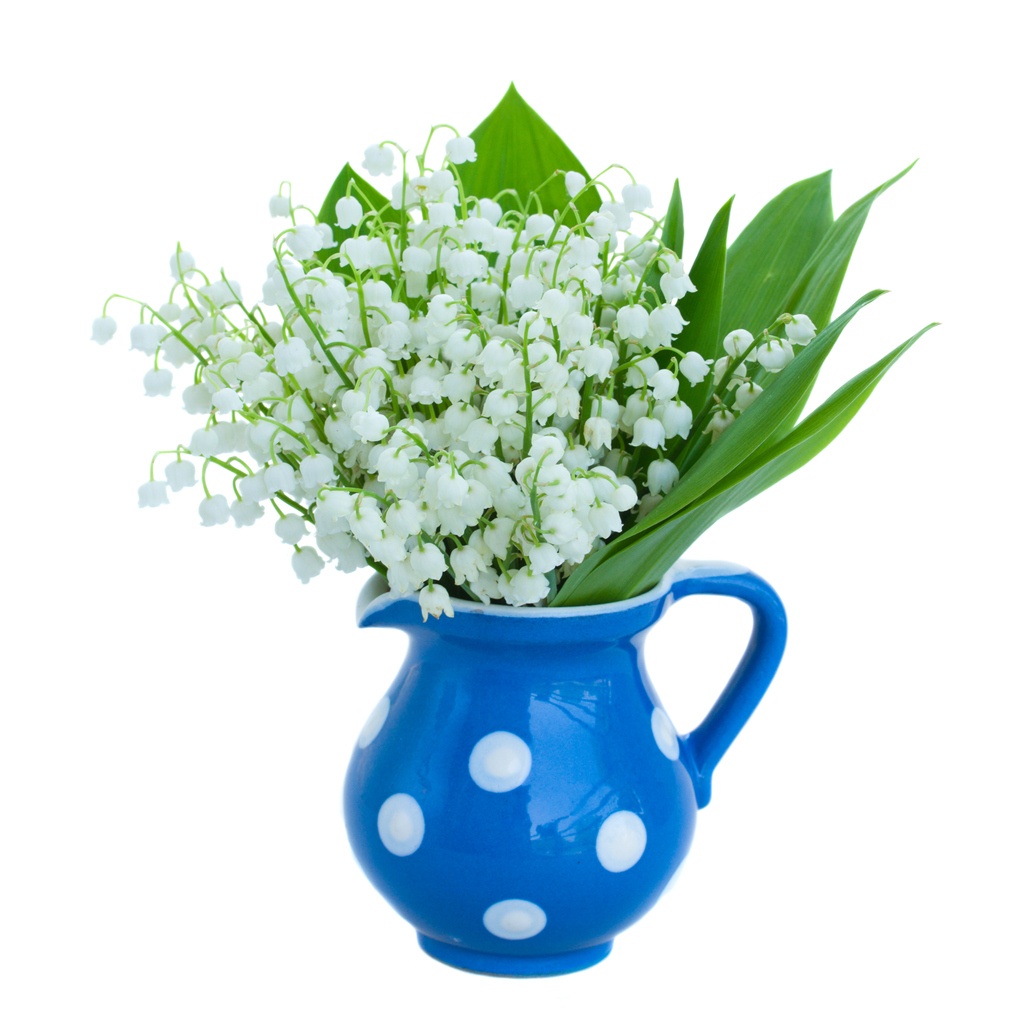
Your home is your castle, so why not enhance it with lily of the valley (Convallaria majalis), one of Kate Middleton’s favorite flowers (she carried it in her bridal bouquet). Its floral sweetness is tempered by herbal and woodsy accents—one reason it’s popular in many perfumes—and those tiny bell-shaped flowers pack a powerful punch.
Nurture lily of the valley with lots of sunlight, potting soil mixed with a bit of peat moss, and moderate temperatures between 60 and 70 degrees Fahrenheit. Warning: Lily of the valley’s flowers and leaves are both extremely poisonous to humans and pets.
RELATED: 20 Pretty Plants That Will Make Your Garden Smell Great
Inhale Heliotrope
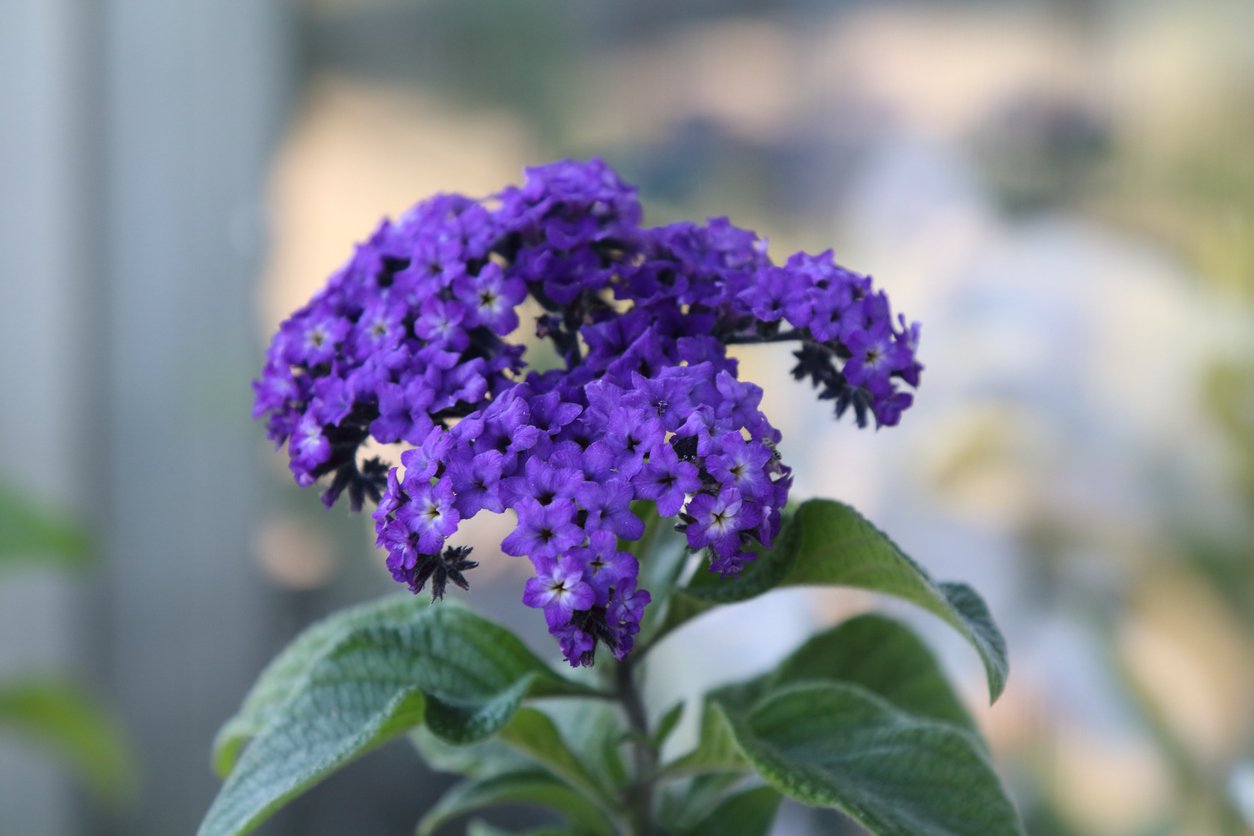
The sweetness of heliotrope (Heliotropium arborescens) recalls vanilla, though some fans claim its clusters of dark purple flowers emit hints of baby powder and cherry pie. It takes its name from the sun god Helios, so no surprise the plant insists on a sun-drenched spot. Plant it with basic potting soil in a fast-draining pot and to keep heliotrope extra happy, lodge it in a somewhat humid area, especially in winter. Pets should be safe around heliotrope, though the ASPCA rates it as toxic to horses.
Bring Home Some Hoya
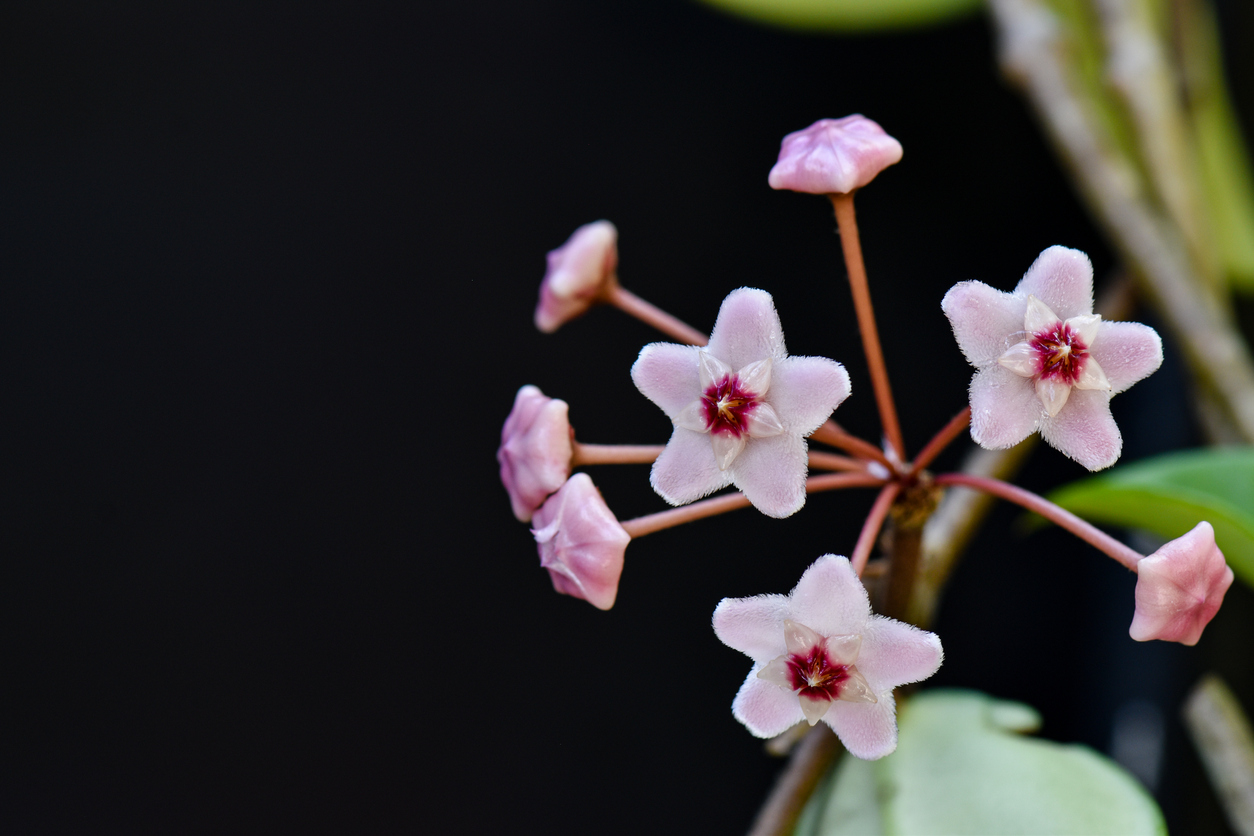
To reward yourself after a long day, come home to hoya (Hoya carnosa). Its striking star-shaped flowers emit a sweet scent that can fill a room, and the aroma comes on even stronger in the evening. This tropical plant is easy to grow and totally low maintenance—simply water when the soil feels dry, as well as misting with water regularly to supply the humidity it craves. As a vine, hoya does great in a hanging planter to drape your digs in flowers and fragrance.
Liven Up With Eucalyptus
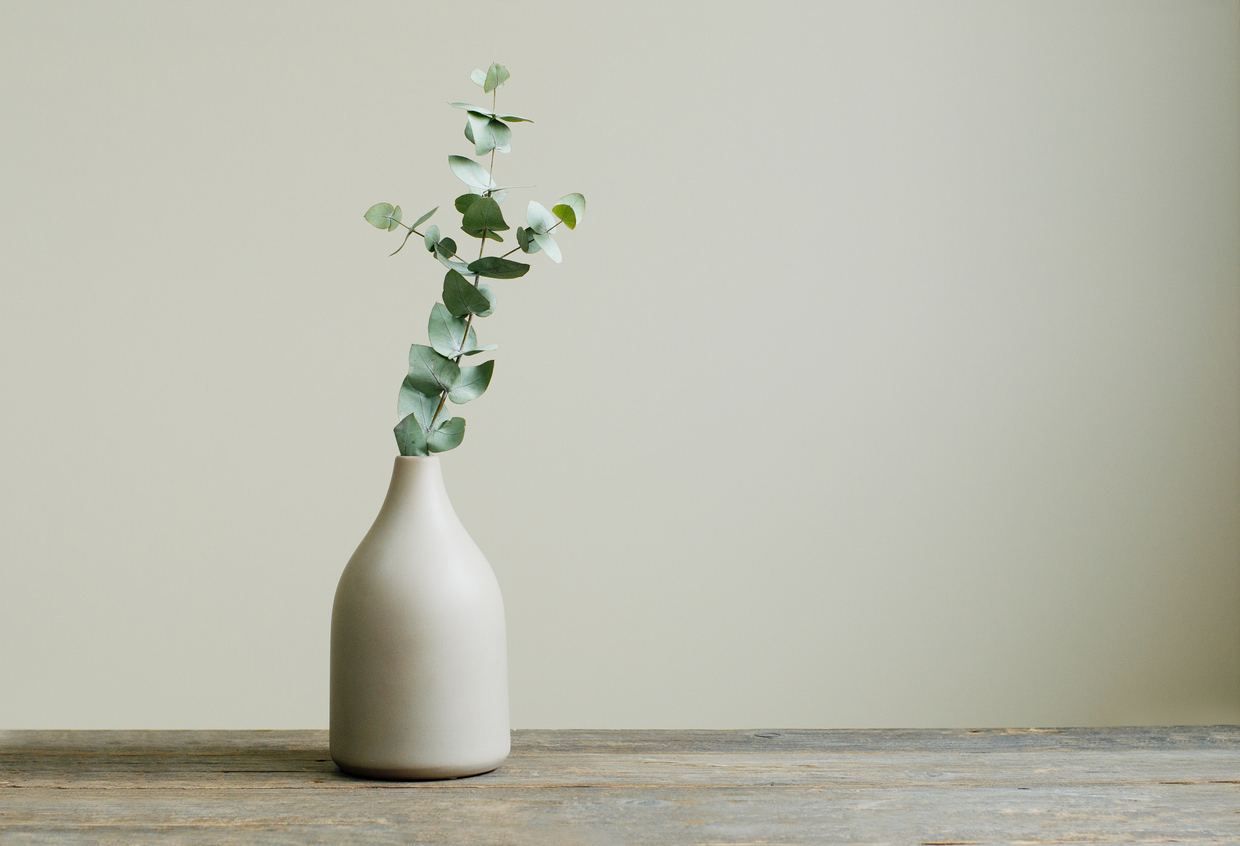
Folks who say “feh!” to flowery smells may give the thumbs up to eucalyptus, which is a member of the myrtle family. The oil in its leaves has a camphorous pungency known to open the sinuses, so it’s the perfect plant for a study or home office to clear out brain fog and enhance focus.
Eucalyptus is easy to grow, thriving in indirect light or full sun, and can tolerate cool temperatures. Let the soil dry a bit between waterings and prune it regularly to maintain a full, bushy appearance. Pet people, take note: The ASPCA says eucalyptus is a no-no that can cause vomiting, diarrhea, and (surprisingly) depression in cats and dogs.
RELATED: Does Your Home Smell Funny? 12 Odors That Could Mean Big Trouble
Treat Yourself to Tuberose
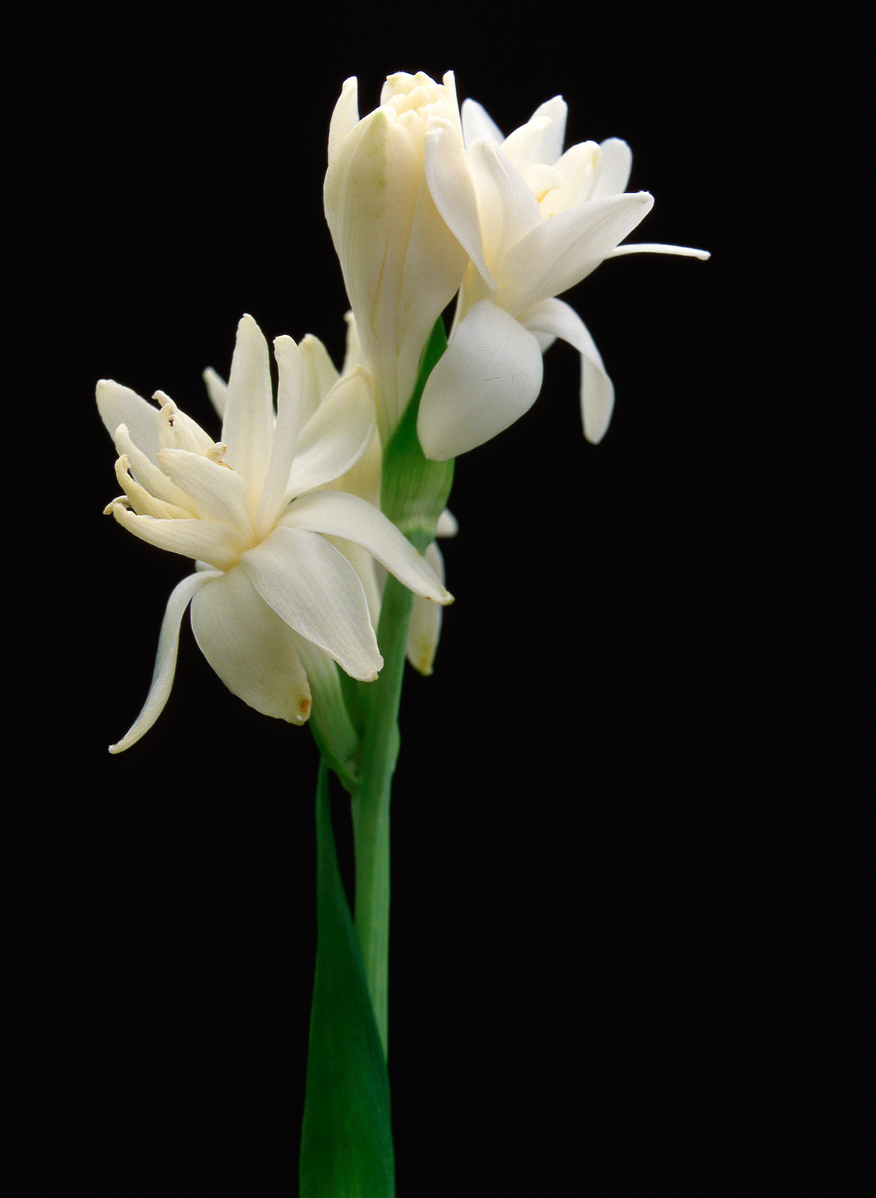
Bold and beautiful in both scent and appearance, tuberose (Polianthes tuberosa) is not a houseplant for the faint of heart. Its strong sweet smell has made it a popular perfume ingredient for centuries. A tropical plant, it should receive direct sun and ample water. Tuberose grows on a long, tall stem, and gardeners recommend cutting some stems during the flowering phase. This will make the plant more productive and allow you to bring a bouquet into another room. Too bad tuberose is a poor choice for pet-friendly homes—it can sicken cats and dogs.
Indulge in Plumeria
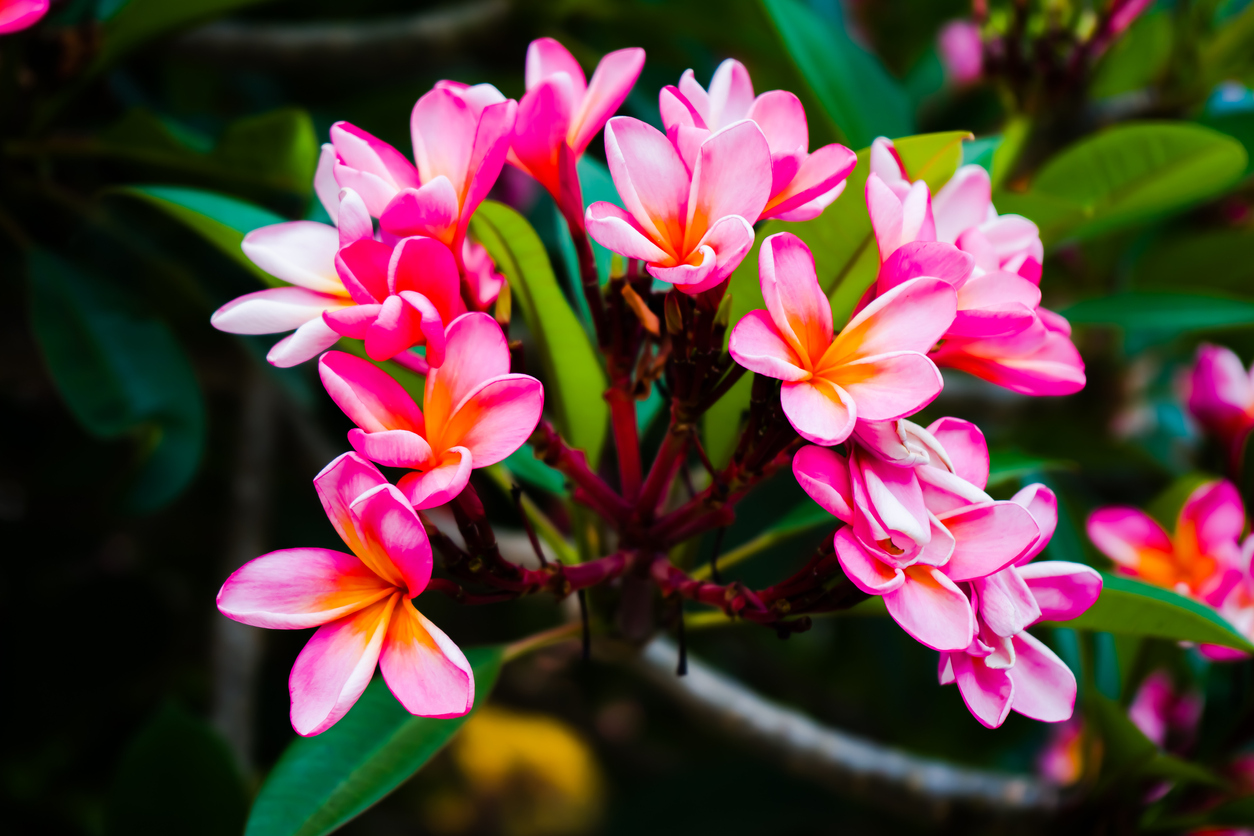
You might just be compelled to host an indoor luau with plumeria (Plumeria rubra) blooming indoors—its large, sturdy petals are often used in Hawaiian leis. It comes in a host of colors and fragrances as well, from tangy citrus to sweet honeysuckle and rose. Plumeria is a shrub, so it demands a large planter and occasional pruning to keep in shape.
Place plumeria where it can soak up ample sun and, while watering every few days in fall and winter should be adequate, this tropical stunner gets thirstier in summer. Sorry, animal lovers! Plumeria—in particular its white, milky sap—doesn’t belong in a home with pets.
RELATED: 11 Super Simple Ways to Make Your House Smell Fresh
Swoon over Passionflower
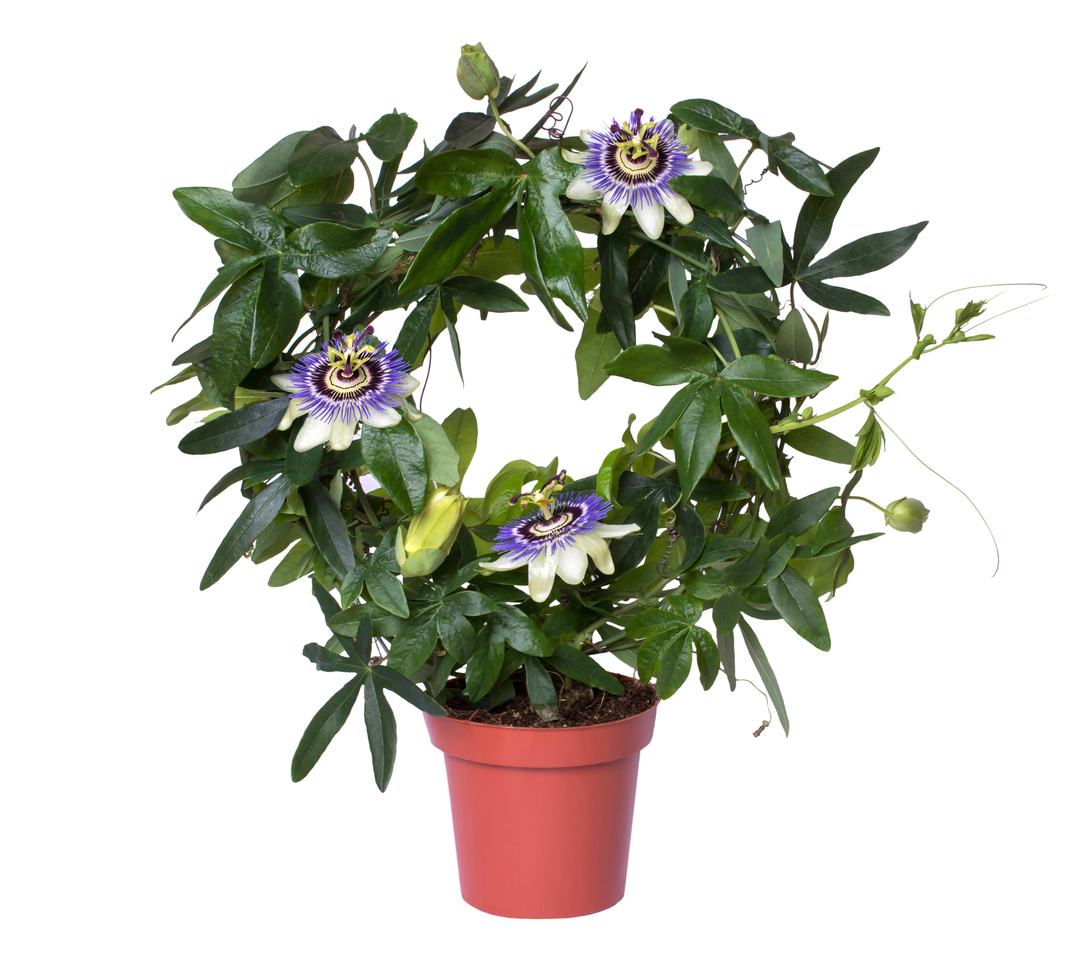
As befitting its intricate bloom and romantic name, the blue and purple passionflower (Passiflora caerulea) has a seductive yet relaxing fruity-floral scent. The plant is a perennial woody vine that does best with lots of sun, ample humidity, and moist but well-draining soil. It can get a bit unruly, so prune it back before it sprawls all over the place; pruning will also foster more frequent blooms. While the ASPCA doesn’t list toxicity information for passionflower, various other sites claim it is not poisonous to humans or house pets.
Lighten Up with Lemon Balm
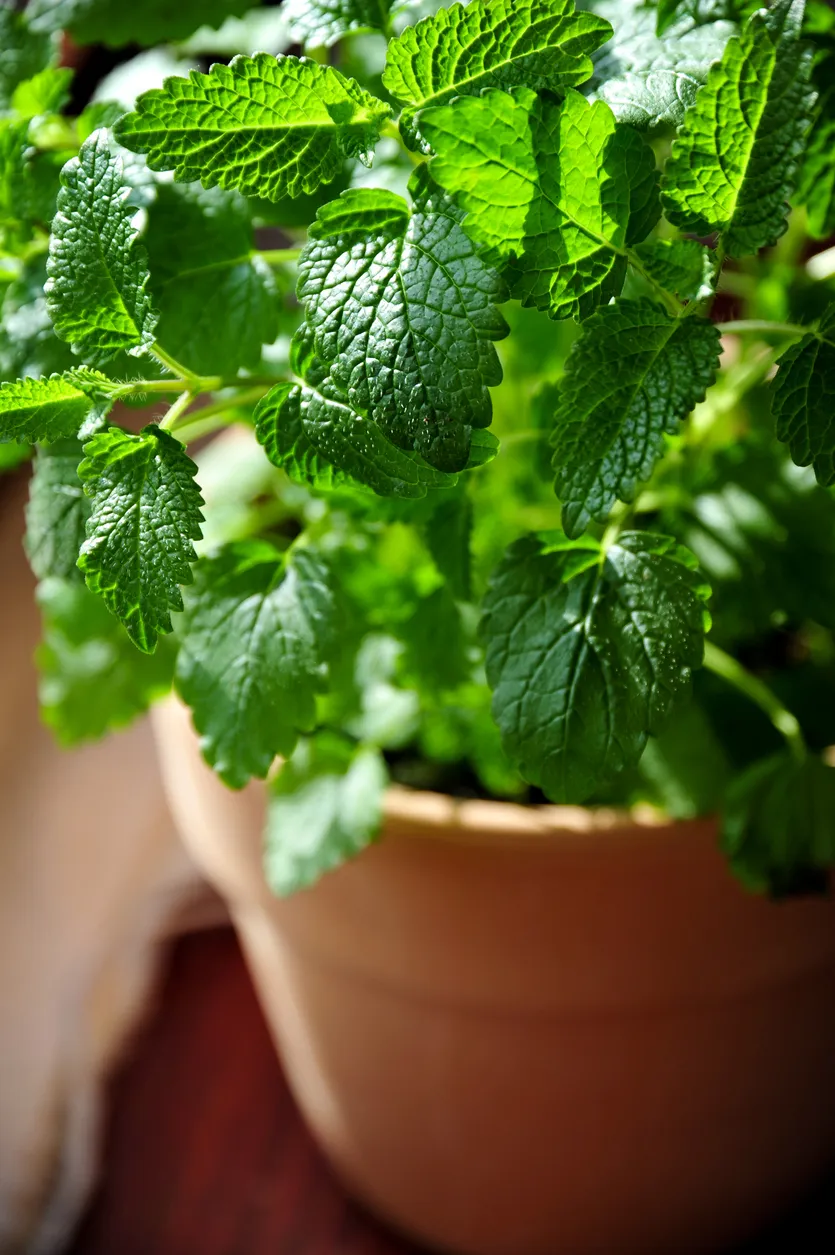
If you like the citrusy smell but don’t have the space or patience to cultivate an indoor lemon tree, try lemon balm (Melissa officinalis). This tidy perennial herb not only imparts the pleasantly tart aroma of its namesake, its bright green leaves bring a fresh taste to soups, salads, and other recipes, making it a super choice for the kitchen. Lodge it in a sunny window, using slightly sandy, well-draining soil, and don’t overwater.
